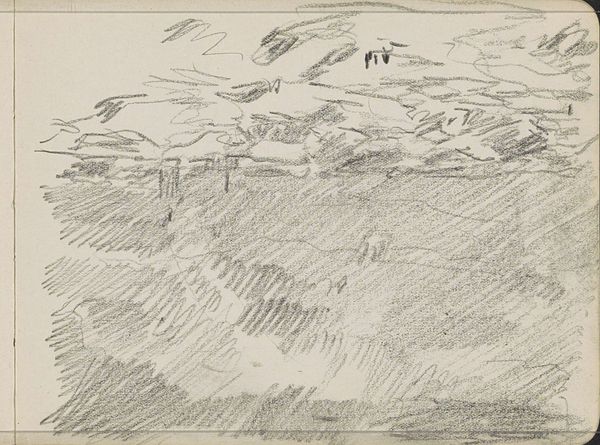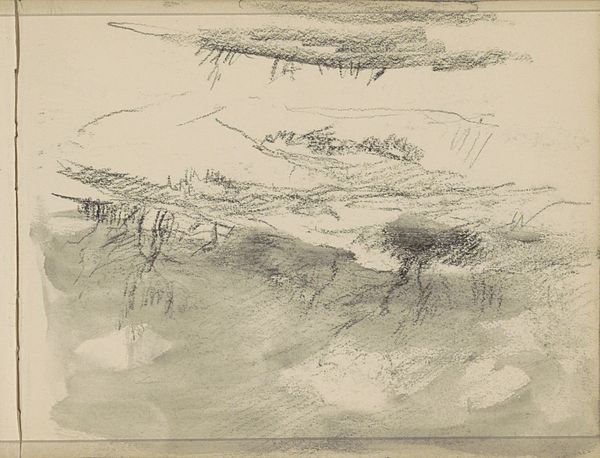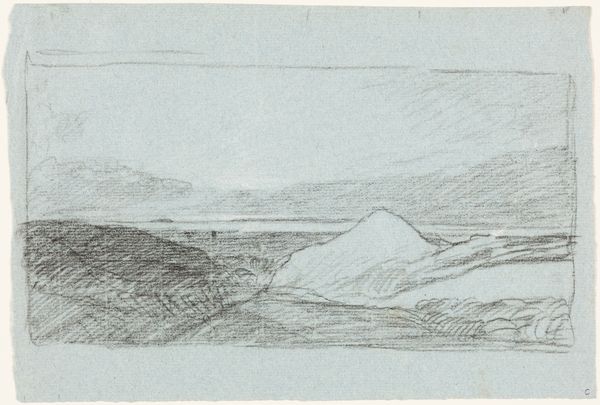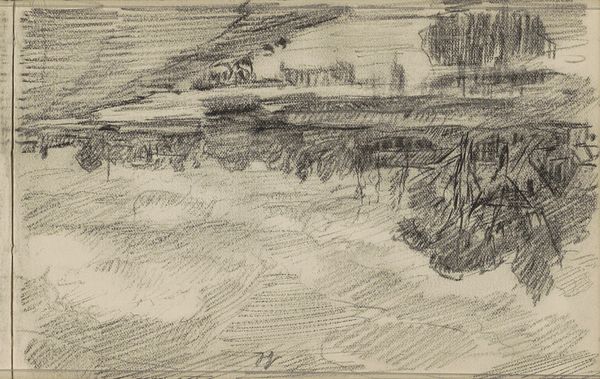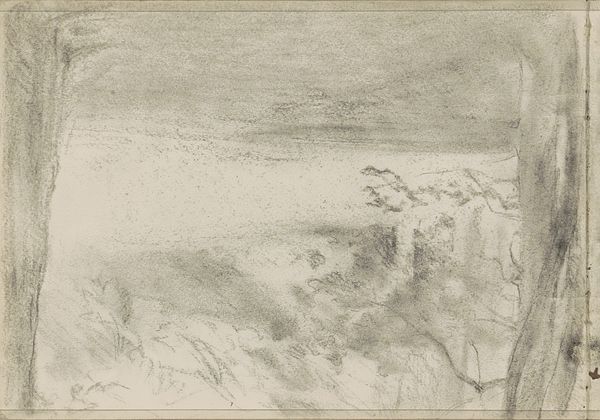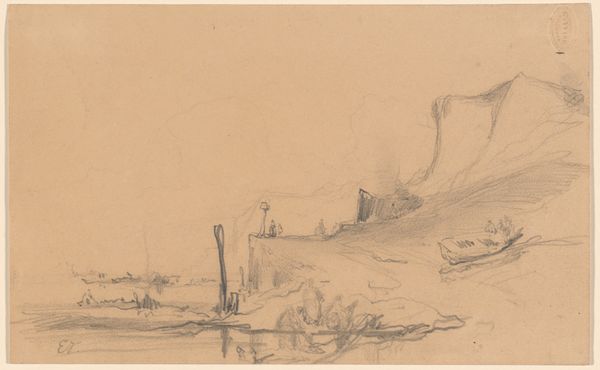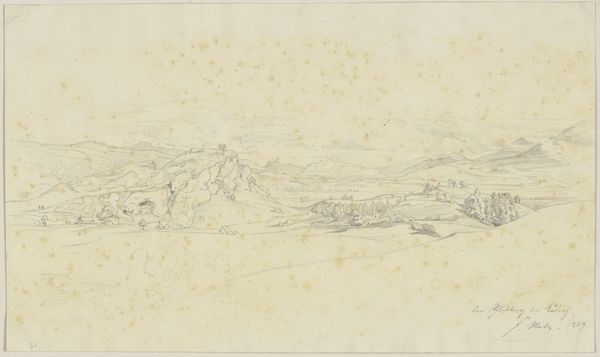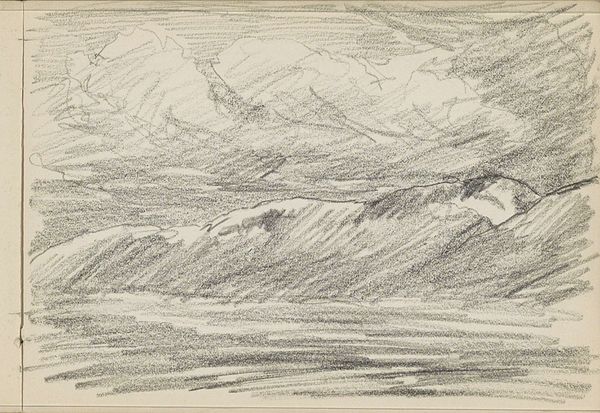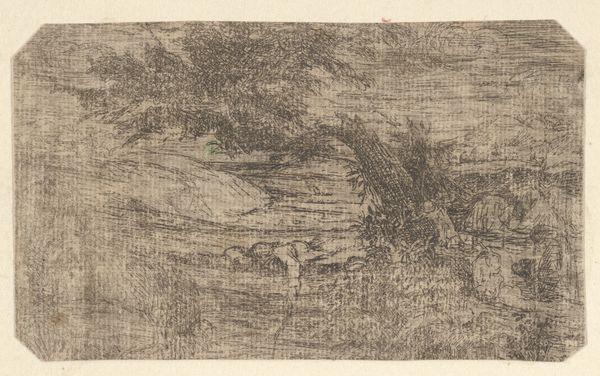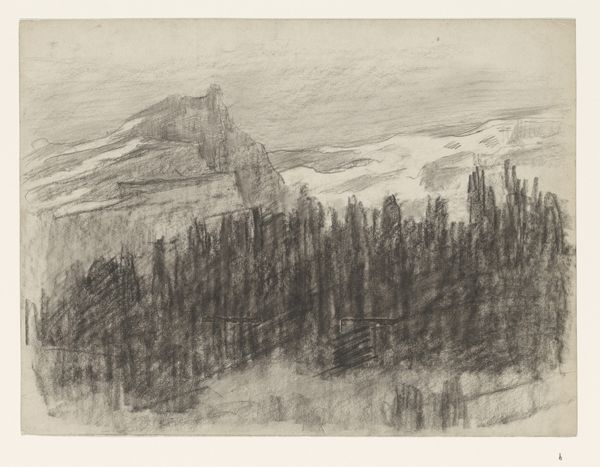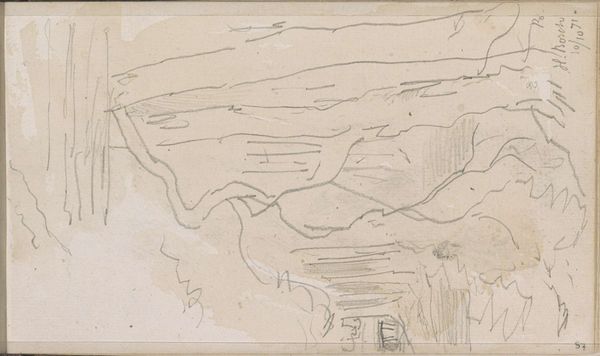
drawing, paper, pencil, architecture
#
17_20th-century
#
drawing
#
pencil sketch
#
landscape
#
paper
#
sketch
#
pencil
#
architecture
Copyright: Public Domain
Curator: Welcome. We're looking at "Ruine von Jimena," a pencil drawing by Rudolf Gudden, part of our 19th-century collection here at the Städel. Editor: Immediately, I'm struck by this ghostly quiet. It's a study in greys, a melancholic hush over what I imagine must have been a bustling place. It feels… incomplete, yet whole somehow. Curator: Yes, "incomplete" is a good word. Gudden, while a competent artist, is not a household name. He traveled extensively, though, and this sketch likely represents a Romantic fascination with ruins, a popular theme reflecting on time, decay, and the transience of human achievement. Editor: You know, seeing those architectural fragments sketched so lightly, it sparks a yearning. Like a forgotten memory, a place you almost remember visiting. Did he spend long there, you wonder? Curator: Likely not. The swift strokes and the choice of pencil on paper suggests this was likely executed en plein air, a quick study for a larger painting perhaps. Think about how ruins were presented in art back then. They were seldom just landscapes. Editor: Right, they were stages for drama, symbols loaded with meaning. What drama do you think he's staging here? Or trying to hint at? Curator: Well, the castle ruin is obviously the central subject. He is also juxtaposing this vestige of the past with the lower landscape and distant sky. It reminds the viewer of the constant transformations societies and the environment undergoes. Editor: I notice how low on the page he places the horizon line. Puts the emphasis squarely on those sweeping skies, almost as if nature itself is swallowing the ruin. Or maybe it’s being lifted up towards heaven to disappear. Curator: Interesting. The pencil sketch was acquired here because Gudden exemplifies art of that era – technically skilled, reflecting on specific themes resonant with audiences and buyers at the time. Its purpose serves to document these concerns within a very tangible way. Editor: This visit really has offered me another glimpse into not only Gudden's era but a chance to pause. Now I look at everything around me differently. Curator: Agreed. Hopefully, it's given everyone else some space to pause, and consider that the ruins we see often depend upon the viewer.
Comments
No comments
Be the first to comment and join the conversation on the ultimate creative platform.
